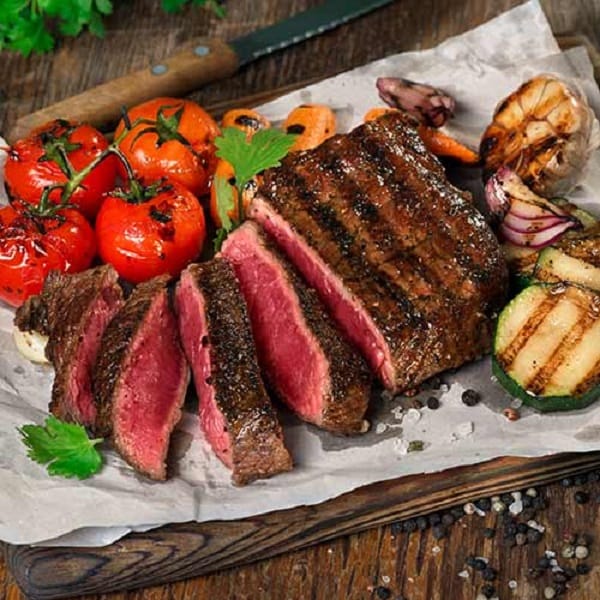Stepping into the world of steak connoisseurship unveils a spectrum of preparation styles, from the well-done to the barely seared. Among these, one of the most intriguing and perhaps mystifying to many is the “Blue Steak.”
A delicacy revered by true steak aficionados, this is the epitome of minimal cooking, capturing the essence of the beef in its most natural state.
The Essence of Blue Steak
At its core, a blue steak is a testament to the art of precision cooking. Depending on the thickness, it’s seared for a very short period, typically at least a minute on each side. This method ensures a steak is charred on the outside yet retains a cool, red center that is barely warmed.
The term “blue” does not refer to the color of the meat but rather its cool interior temperature and the slight hue the red meat takes on when minimally cooked.
The Origins and Mythology
Source: https://www.webstaurantstore.com/
The origins of this dish are shrouded in culinary mystery, with several European cuisines staking claim to its invention. With its penchant for elegance and simplicity, French cuisine often receives credit for popularizing this method under the term “steak bleu.”
The technique highlights the meat’s quality and the chef’s skill, emphasizing the importance of both in achieving the perfect steak.
Selecting the Right Cut
The choice of meat is paramount when preparing this dish. High-quality, well-aged cuts such as ribeye, sirloin, or filet mignon are ideal, offering the perfect balance of tenderness and flavor. The dish should be brought to room temperature before cooking, ensuring even searing and a consistent internal temperature.
The Cooking Process
Achieving the perfect blue steak requires a pre-heated, boiling pan or grill. This intense heat creates a Maillard reaction on the surface of the meat, developing a rich, complex flavor and an appealing crust. Minimal seasoning, typically just salt and perhaps a touch of pepper, allows the natural taste of the meat to shine through.
Nutritional Profile
Blue steak is safe to eat despite minimal cooking, provided it comes from a reputable source and is handled properly. It retains more natural moisture and nutrients, including proteins, essential fatty acids, and vitamins, particularly B vitamins, making it nutritious for those who appreciate its unique preparation.
Safety Considerations
Embracing the Adventure
Embarking on a culinary adventure with blue steak offers a unique opportunity to explore the nuances of beef at its most primal. It challenges the palate and invites diners to appreciate the quality of the meat and the skill involved in its preparation. Whether enjoyed in a fine dining establishment or cooked at home with care, this dish celebrates culinary simplicity and elegance.

Welcome to the captivating world of Tusks Bar and Grill, an East African Fusion restaurant nestled in the heart of Calgary, Canada. Tusks Bar and Grill is a culinary gem that brings together the vibrant flavors and rich culinary traditions of East Africa, creating a truly unique and unforgettable dining experience.
